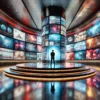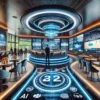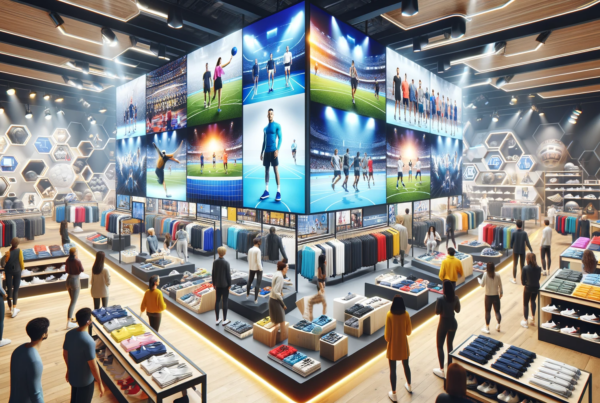Welcome to the dynamic world of sports bars, where the thrill of the game meets the camaraderie of fans and the buzz of social interaction. In this competitive industry, standing out and keeping customers coming back for more is paramount. One of the most effective tools at a sports bar owner’s disposal is commercial programming. This powerful strategy not only entertains but also fosters a loyal customer base that can make or break a venue’s success.
But what makes commercial programming so crucial in the realm of sports bars? It’s about creating an atmosphere that resonates with the target audience, offering them a space that feels like their own. From the selection of games to the curated content during breaks, every detail contributes to the customer experience and, consequently, to their loyalty. Let’s delve into the mechanics of how strategic commercial programming can transform a casual visitor into a committed patron.
The Role of Commercial Programming in Building a Loyal Customer Base
Commercial programming in sports bars isn’t just about showing the most popular game of the day. It’s a thoughtful approach to selecting content that aligns with the interests and passions of the clientele. Whether it’s a local team’s big match or a niche sport with a dedicated following, the key is to understand and cater to the patrons’ preferences.
By consistently providing the content that customers want to see, sports bars can establish themselves as the go-to destination for specific events. This not only increases foot traffic during these events but also encourages customers to think of the establishment first for future viewing needs. Moreover, it creates a community among patrons, further solidifying their loyalty to the bar.
But it’s not just about the sports; it’s about the entire package. The ambiance, the service, the food and drink offerings—all of these are part of the commercial programming strategy. They work together to create a memorable experience that customers want to relive. This holistic approach ensures that customers are not just satisfied but delighted, making them more likely to return.
Customizing Content to Reflect Customer Preferences
Sports bars have a unique opportunity to tailor their commercial programming to the tastes of their local customer base. This requires understanding the demographics of the area and the preferences of regular patrons. Are there local sports teams that have a fervent fan base? Are there niche sports or leagues that don’t get as much mainstream coverage but have a dedicated following?
By identifying these opportunities and showcasing these events, sports bars can create a sense of exclusivity and belonging among their customers. This not only attracts new patrons looking for a place to enjoy their favorite sports but also reinforces the loyalty of existing customers who appreciate the personalized touch.
Additionally, engaging with customers to get their feedback on what they would like to see can be a game-changer. This direct line of communication shows that the bar values their input and is committed to providing the best possible experience. It’s a proactive step towards building a community that feels invested in the bar’s success.
Maximizing Engagement During Off-Peak Hours
One of the challenges sports bars face is maintaining customer engagement during off-peak hours or seasons. This is where creative commercial programming comes into play. By offering a diverse mix of content, such as classic game replays, sports documentaries, or interactive events like trivia nights, sports bars can keep the momentum going even when live sports are not in session.
These off-peak programs not only keep the establishment lively but also provide opportunities for customers to engage with the sports bar in new ways. It’s an excellent strategy for building a stronger connection with the customer base and ensuring that the sports bar remains a hub of activity year-round.
Moreover, these events can be marketed to attract specific customer segments. For example, hosting a trivia night focused on a particular sport can draw in fans interested in that area, potentially opening up a new customer base. It’s all about finding creative ways to keep customers engaged and giving them reasons to return.
Leveraging Technology to Enhance Viewing Experiences
In today’s digital age, technology plays a significant role in commercial programming. Sports bars that utilize the latest tech to enhance the viewing experience can gain a competitive edge. From high-definition screens to immersive audio systems, the goal is to make customers feel like they’re part of the action.
Additionally, offering interactive features such as mobile apps for ordering or games that customers can play during breaks can significantly enhance the overall experience. These tech-driven solutions not only make the experience more convenient and enjoyable but also demonstrate that the sports bar is forward-thinking and attuned to modern consumer preferences.
Investing in technology also opens up new possibilities for programming. For example, virtual reality experiences that allow customers to feel like they’re in the stadium or participating in the sport themselves can be a unique selling point for a sports bar. It’s about pushing the boundaries of what’s expected and providing an experience that can’t be found elsewhere.
The Winning Formula for Customer Loyalty
In conclusion, commercial programming is a multifaceted tool that sports bars can leverage to build and maintain customer loyalty. By curating content that resonates with their audience, creating a welcoming atmosphere, and embracing technology, sports bars can cultivate a loyal customer base that will support them through thick and thin.
It’s about understanding the customers, engaging with them, and consistently delivering an experience that exceeds expectations. With the right commercial programming strategy, sports bars can turn casual patrons into lifelong fans who are not just customers but also advocates for the brand.
Remember, in the competitive world of sports entertainment, it’s not just about showing the game—it’s about creating an experience. And that experience is what will keep customers loyal and coming back for more.








